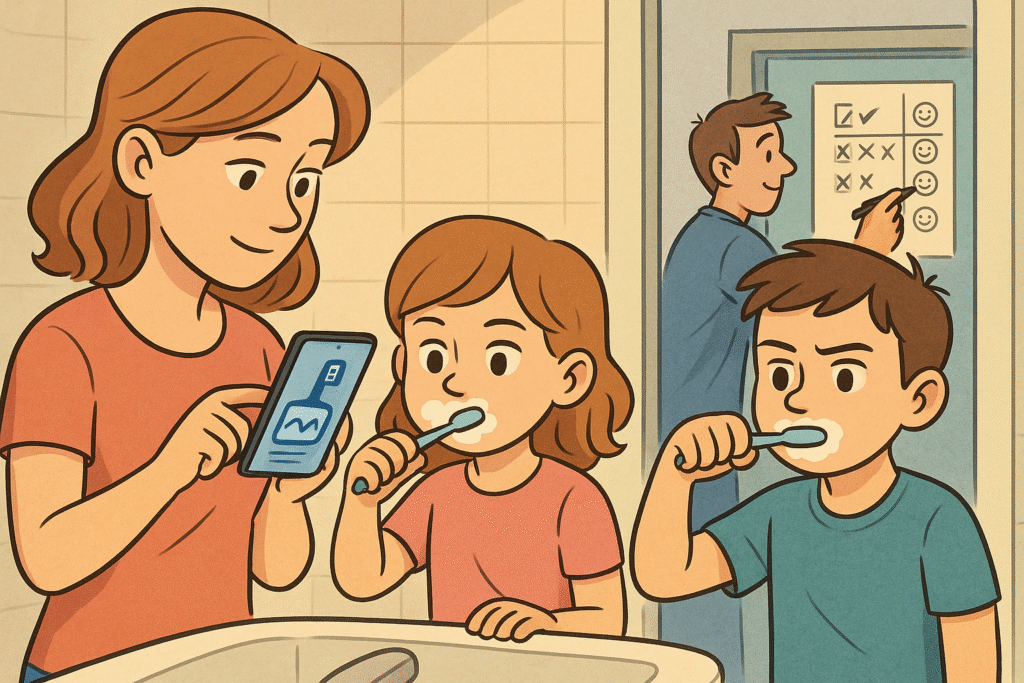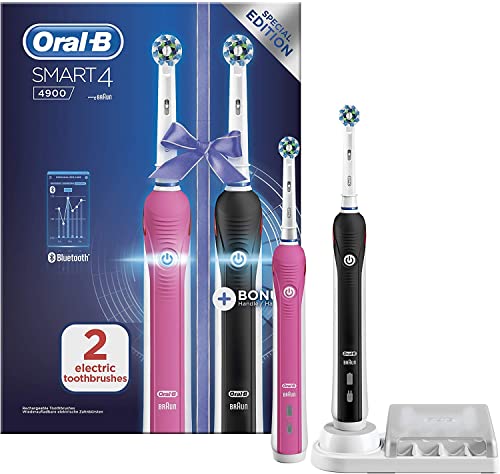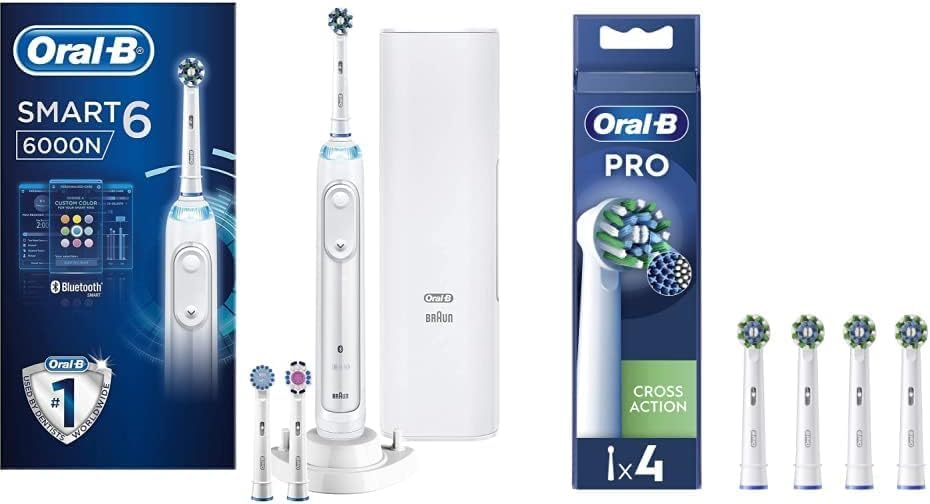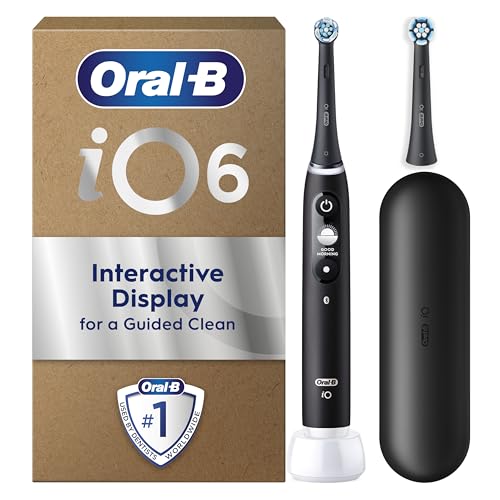Smart & Bluetooth Toothbrushes: What You Need to Know (2025 UK Guide)

Smart toothbrushes — electric brushes that connect to an app via Bluetooth — are increasingly popular. They offer features like feedback on brushing coverage, timers, and pressure alerts. But do they really help you clean better? This guide walks through how they work, what the evidence says, important features, best models, and tips for choosing one in the UK.
Table of Contents
- How Smart / Bluetooth Toothbrushes Work
- Potential Benefits & What the Evidence Says
- Features to Look For
- Limitations & Things to Watch Out For
- Top Smart Toothbrush Models (UK 2025)
- How to Choose the Right One for You
- Smart Toothbrush FAQs
- Sources & Further Reading
How Smart / Bluetooth Toothbrushes Work
A smart toothbrush is essentially an electric toothbrush with built-in sensors and Bluetooth connectivity. These features allow the brush to send data (speed, movement, pressure, coverage) to a mobile app. The app then provides visual feedback, coaching, reminders, and tracking over time.
- Motion or position sensors detect which surfaces are brushed and which are missed.
- Pressure sensors detect if you’re pressing too hard.
- The app displays heat maps, coverage maps, and brushing statistics (time, areas cleaned, streaks).
Potential Benefits & What the Evidence Says
Smart toothbrushes aim to add a behavioural layer to brushing: more engagement, better coverage, and feedback loops. Below is a summary of what studies have found so far.
- Some trials show that adding app feedback or telemonitoring leads to **greater plaque and gum health improvements** over 3–6 months compared to brushing without feedback. Example: A Korean 6-month RCT compared a “telemonitoring smart brush + dentist review” vs regular powered vs manual brushing. Full text: https://pmc.ncbi.nlm.nih.gov/articles/PMC11851029/
- Observational data from millions of app sessions suggest that gingival bleeding rates decline and overuse of pressure decreases with app use. (Though self-reported) Example: large in-market evaluation of app users with interactive electric brushes. Abstract: https://www.researchgate.net/publication/358006076_A_Global_In-Market_Evaluation_of_Toothbrushing_Behaviour_and_Self-assessed_Gingival_Bleeding_with_Use_of_App_Data_from_an_Interactive_Electric_Toothbrush
- Connected toothbrushes affect user perception: users report increased brushing confidence, satisfaction, and a feeling of improvement early on — though the relationship with objective plaque measures is weak in some cases. Full article: https://bmcoralhealth.biomedcentral.com/articles/10.1186/s12903-025-05907-5
- In children / school settings, smart toothbrush deployments show promise in adherence and usage metrics (though clinical outcomes are still being studied). Example: feasibility trial in Manchester schools. Study: https://bmcoralhealth.biomedcentral.com/articles/10.1186/s12903-025-06581-3
Bottom line: smart features can help, especially by nudging users to brush better, but they don’t override the basics (consistent brushing for 2 minutes, proper technique, fluoride, interdental cleaning).
Features to Look For in a Smart Toothbrush
- Reliable Bluetooth connection (stable pairing).
- Coverage / guidance maps (which surfaces you missed).
- Pressure sensor with alerts (visual or haptic) to prevent over-brushing.
- App usability: clear UI, insightful feedback (not just raw numbers).
- Gamification / reward systems (helpful for kids or habit formation).
- Data syncing / backup (so you don’t lose progress).
- Good base brush: timer, quad pacer, soft heads — the smart layer is extra, not everything.
Limitations & Things to Watch Out For
- Smart features require **battery, connectivity, and app updates** — if any break, features may stop working.
- People may lose interest in the app over time (novelty effect). Some studies show drop-off in engagement after 3–4 weeks.
- Data is often self-reported or from users who opt into app use — may favor more motivated people.
- Expensive models may not yield huge extra benefit over a simpler powered brush, especially once your brushing habits are solid.
- Privacy / data: the app collects brushing data, so review the privacy policy and data ownership (especially with children in the household).
Top Smart Toothbrush Models in the UK (2025)
| Model | Smart features | Why choose it |
|---|---|---|
| Oral-B Smart 4 | Bluetooth, coverage feedback, pressure sensor, quad pacer | Excellent value + smart features for everyday use |
| Oral-B iO Series 6 | Advanced motion sensors, app coaching, gentle drive system | Premium feel, smoother action, great feedback |
| Philips Sonicare 9900 Prestige | AI guidance, pressure sensing, app heat maps | For those who prefer sonic vibration and high tech |
Note: availability and price vary over time. Always check replacement brush head cost and app support for your region.
How to Choose the Right Smart Toothbrush for You
- Decide which features you care about (coverage maps, pressure alerts, gamification).
- Ensure good brush fundamentals (solid motor, timer, heads availability).
- Consider your tech habits: if you enjoy apps and tracking, more premium features may engage you.
- Check app compatibility (iOS / Android) and support.
- Think about long-term usage: you want to keep using the smart features, not abandon them in a few months.
- Always practise good technique — the smart layer is a helper, not a substitute.
Smart Toothbrush FAQs
Are smart toothbrushes really better than normal electric ones?
Sometimes — the feedback and guidance can help improve technique and consistency. But if you already brush well with a normal electric brush, gains are smaller.
Do the apps invade privacy?
Some collect brushing data (time, pressure, coverage). Always read the app’s privacy policy. Prefer brands that anonymise or secure data.
For kids — are smart brushes worth it?
Yes, often. Gamification, rewards, and brushing streaks can make brushing fun and more consistent for children.
Do smart toothbrushes cost much more?
Yes — roughly 10–30% more over a good powered brush. You pay for sensors, app development, and firmware updates.
Will smart features stop working in a few years?
It depends on firmware/app support. Choose brands with long-term support or fallback to basic powered brush functionality if the app is discontinued.
Sources & Further Reading
- Korean 6-month telemonitoring RCT: https://pmc.ncbi.nlm.nih.gov/articles/PMC11851029/
- Global app data evaluation: https://www.researchgate.net/publication/358006076_A_Global_In-Market_Evaluation_of_Toothbrushing_Behaviour_and_Self-assessed_Gingival_Bleeding_with_Use_of_App_Data_from_an_Interactive_Electric_Toothbrush
- Connected toothbrush perception study: https://bmcoralhealth.biomedcentral.com/articles/10.1186/s12903-025-05907-5
- School-based smart brush feasibility: https://bmcoralhealth.biomedcentral.com/articles/10.1186/s12903-025-06581-3




